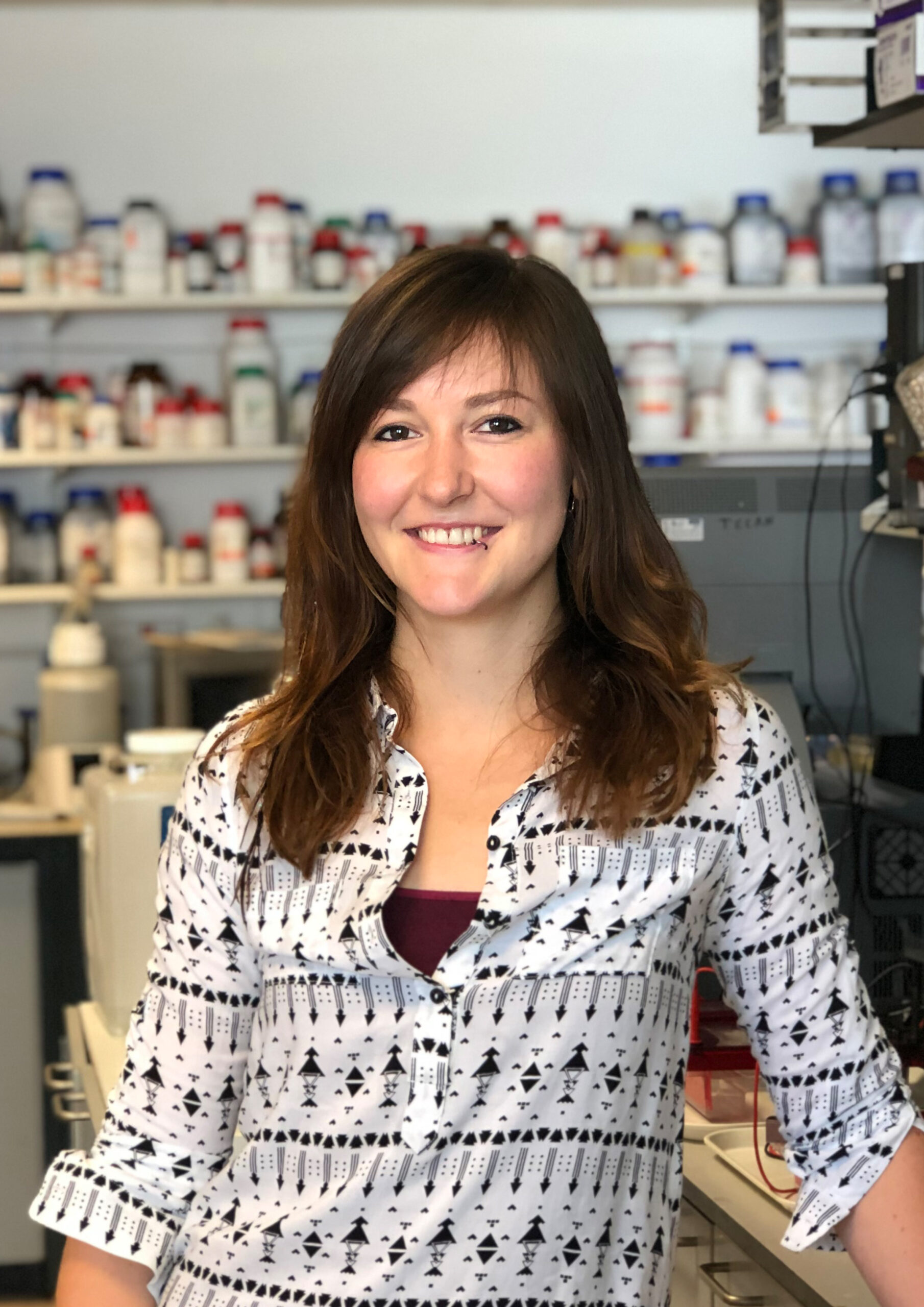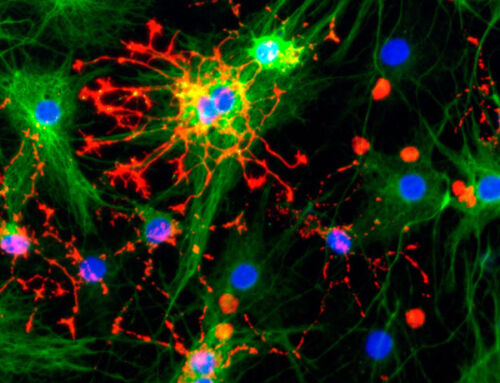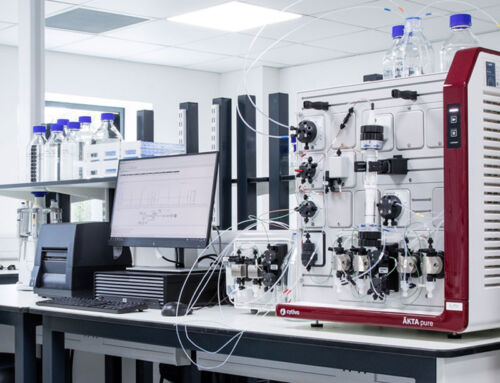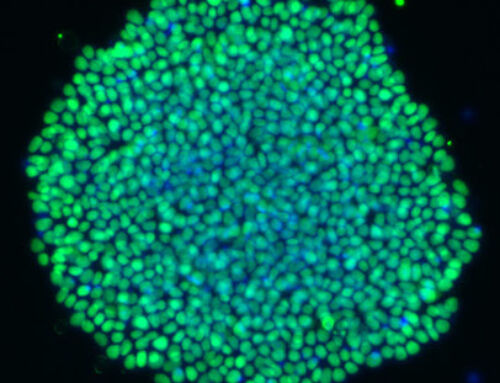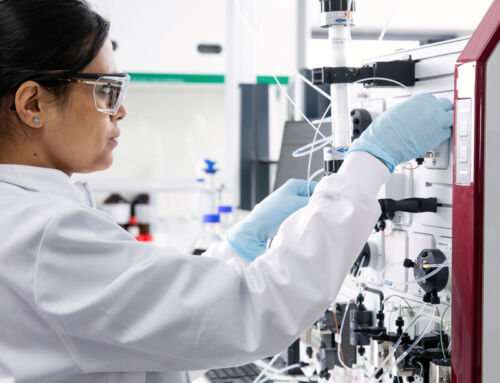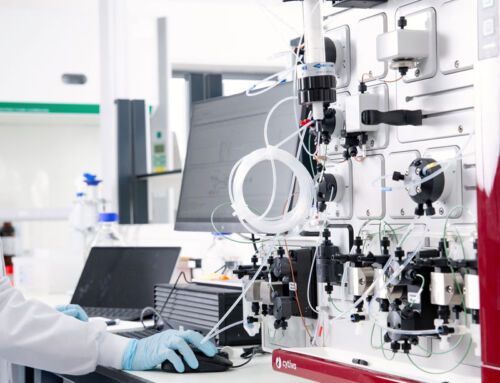Protein origami to change the future of food
Are you looking for an idea to start a multimillion-pound business? Proteins that stimulate cell growth currently cost several million pounds per gram, which makes them more expensive than diamonds. You need particularly lots of them if you want to grow enough cells to assemble a steak.
This so-called ‘cultivated’ or ‘lab-grown’ meat was initially proposed as food for astronauts but has since turned from a science fiction fantasy to a source of hope for a more sustainable and animal welfare-conscious food for the world.
Industrial animal agriculture lies at the intersection of some of the most pressing issues facing humanity today: climate change, zoonotic pandemics, antibiotic resistance, biodiversity loss and animal suffering on an extraordinary scale. Although vegetarianism and veganism are becoming more mainstream, global demand for meat continues to rise. One way to bring about mass changes in consumer behaviour is through the provision of better alternatives.
Cultivated meat is produced from animal cells cultured in a bioreactor rather than being sourced from slaughtered animals. It aims to have the same composition as conventional meat and is therefore undistinguishable in taste and nutritional profile.
Why grow the complex, sentient creatures we call cattle— with bones, hooves and stomachs belching methane—when we are ultimately only interested in enjoying a medium-rare steak? Cultivating meat eliminates those inconveniences, bypassing the ethically and environmentally controversial task of growing a whole body and sustaining a consciousness.
Cattle eat 25 calories for every calorie of edible protein they produce. This huge inefficiency explains why animal agriculture uses 75% of agricultural land yet provides only 33% of our protein supply globally. It drives climate change, being responsible for almost 15% of all greenhouse gas emissions. Furthermore, two thirds of the world’s antibiotics are fed to farm animals to keep them alive in poor conditions where disease spreads easily, contributing to the rising threat of antibiotic resistance.
The case to change our food system is strong and the potential benefits of cultivated meat are considerable. Still, there are major technical hurdles to overcome. One of them is the cost of the nutrient soup the cultured cells grow in: If we feed them diamond-priced growth factors, who would be willing to pay 50 pounds for a burger?
So now let me share how protein origami can be used to overcome these bottlenecks and help us to save the future of our food system.
We tend to think about proteins simply as something we eat as part of a balanced diet. Meat, fish, and eggs are high in protein, right? However, they are so much more than this and play a crucial role in our body. Proteins are one of the four invisible building blocks of life, real multitaskers, and the workhorse of the cell.
They are essential to building muscles and bones and also to managing our immune system, as well as the communication between cells. It is no overstatement to say that proteins participate in practically every process of each cell in our body.
Proteins are themselves made of smaller building blocks: the amino acids. There are 20 of them, and like an alphabet, they can be arranged in countless different ways to create the unique ‘name’ of a protein. In fact, it is a very long name as a typical protein contains 300 or more of these ‘letters’ arranged in a unique sequence.
Depending on its ‘name’, the protein folds into a certain shape, creating a 3D structure. It is like origami that transforms a flat square sheet of paper with the protein’s name written on it into a finished protein sculpture.
If a protein origami is ‘misfolded’, it cannot do its designated job and needs to be repaired or discarded. Unlike the simple frustration you would experience having to start your origami project all over again after a failed attempt, too much protein misfolding can be harmful and ultimately lead to the death of the cell. Therefore, correct protein folding is very important to ensure the vitality of cells and the whole body.
Thinking about protein origami is part of my day-to-day routine in the lab and I believe that it has the power to pave the way for making the 50-pound cultivated meat burger more affordable.
The protein FGF2 (fibroblast growth factor 2) is one of the million-pound growth factors needed to grow meat in the lab. But, unlike a long-lasting diamond, FGF2 is inherently unstable and degrades within seven hours. In other words, the FGF2 origami is particularly wobbly and fragile.
Researchers of the Cambridge-based start-up Qkine set out to change this, as longer-lived FGF2-G3 would increase the lifetime of the nutritious soup required to grow enough cells to produce the lab-grown steak. The maths is easy: the longer FGF2 lasts, the less is needed, the lower the costs.
Qkine adapted and enhanced licensed technology which had previously investigated the folded FGF2 origami and identified parts that looked particularly unstable. They exchanged some of the letters in the protein ‘name’ that match to the wobbly parts to create a better folded 3D structure. Basically, they put a bit of glue into the structure to make the origami more robust.
This was the birth of FGF2-G3, an enhanced version of FGF2 with the superpower of increased stability and longevity. It has a greatly increased lifetime of more than seven days and stimulates cell growth much longer than its predecessor. Instead of adding fresh growth mixture for the cultivated meat cells every day, you can now do it just once a week. Therefore, discovery of FGF2-G3 has brought us closer to the goal of making cultivated meat a cost-competitive food on the supermarket shelves.
But why didn’t nature come up with same idea to save the resources of the cell in the first place? The reason is that growth factors are very potent stimulants. Their short lifetime allows the cells to quickly up or down-regulate them in response to changing states of the organism. For example, to quickly initiate speedy recovery after an injury, and also stop growth when a wound is healed.
Of course, the FGF2 success story represents only one step, and the technology behind cultivated meat still has a long way to go. Many more protein origamis are waiting to be reinvented to help us end industrial animal farming. Only if scientists, farmers, and consumers work together we can make a real difference. It is in our hands to make the shift towards a sustainable and ethical food system the legacy of our generation, but it requires the joint efforts of us all.
To learn more about thermostable FGF2-G3 and the history of FGF2, visit https://qkine.com/thermostable-fgf-2/
